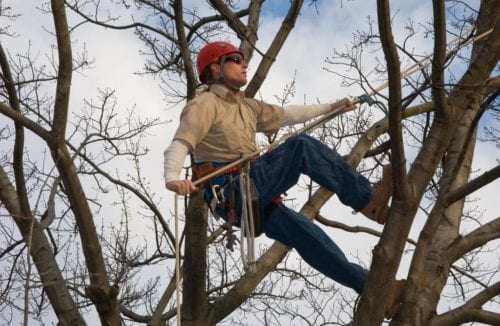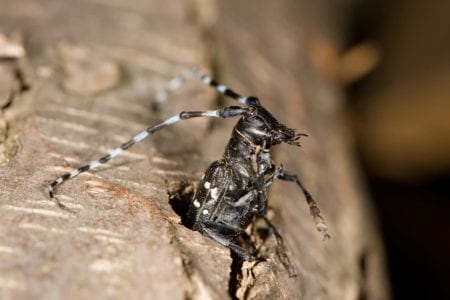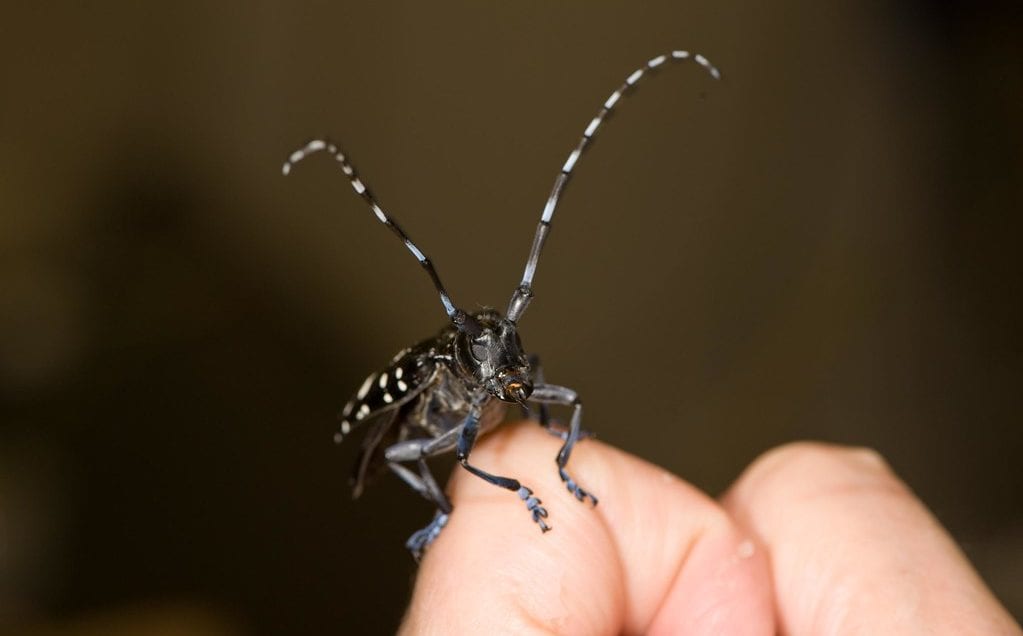An aptly named invasive pest, the Asian longhorned beetle (ALB) snuck into South Carolina for the first time in 2020 and established a toehold in Lowcountry hardwood trees.
A toehold will be all the insect gets if a coalition of federal and state officials, local property owners and Clemson researchers has its way. The team has organized one of the Palmetto State’s largest and most coordinated responses to an invasive species, leading to a recently expanded quarantine of 76.4 square miles in Charleston County and a sliver of Dorchester.
“We feel pretty confident that the ALB is contained within the area,” said Steven Long, assistant director of Clemson Regulatory Services who oversees the state Department of Plant Industry (DPI) and its invasive species programs. “But it’s a very intensive process. It’s possible that in the coming years the buffer zone will extend a little to prevent the spread.”
“Intensive” is no exaggeration. Individual inspection of more than 44,000 trees has been conducted so far, with more than 2,000 of the 4,700 known infested trees removed and more coming.
The arduous process requires plenty of boots on the ground — and in the treetops. Teams of two to four make up a survey crew. They lay a flag line on property suspected of an infestation and then systematically examine every tree belonging to the beetle’s preferred hosts. ALB primarily attacks maples, elms, willows, ash, sycamore, birch and several other hardwood species. Its tunneling weakens and ultimately kills the trees.

“We’re really scouring the host species for any sign of it,” Long said. “We’ll mark it as infested or suspicious and turn it over to a climbing crew.”
Investigators begin with binoculars to look for telltale signs that a beetle has made a home for its larvae in a tree’s trunk. Likely candidates require closer observation to locate egg sites and exit holes, even up in the branches and upper canopy.
“We have had really good cooperation from property owners whose trees are affected,” said Haley Ritger, the local ALB program manager who has been based in Hollywood since November. “No one wants to see ALB spread. We’re very appreciative of that.”
Ritger’s DPI appointment was made possible by a grant from the USDA Animal and Plant Health Inspection Service, which has extensive experience battling the pest in other states. Its ALB Cooperative Eradication Program already has helped drive the invader out of two states.
South Carolina is the sixth state to detect an Asian longhorned beetle infestation. The pest has been eradicated from New Jersey and Illinois; eradication efforts are ongoing in New York, Massachusetts and Ohio.
With the change of seasons, the search for ALB in the Palmetto State will heat up. A link to an online reporting tool is atop the DPI invasive species web page at www.clemson.edu/invasives. Reports can also be made through email at stopALB@clemson.edu or by phone to the S.C. Asian longhorned beetle eradication program office at 843-973-8329.

The Asian longhorned beetle takes its name from its abnormally long antennae.
“Adults are large (up to 1 1⁄2” long) black beetles with white spots, black and white striped antennae, and bluish feet,” said Dave Coyle, a Clemson assistant professor of Forest Health and Invasive Species who is among the researchers helping to identify the beetle’s habits in its new surroundings. “Signs of an infestation include large, pencil-sized holes on trees, bleeding from wounds on the trunk, and conical, chewed-out marks on the trunk.”
Although ALB currently is only known to be within the quarantine area in South Carolina, Long is taking a cautious approach.
“Right now, we do think it is only in Charleston County and immediately over the line in Dorchester,” he said. “But if that’s all we think, we may miss something, so we remain watchful.”
Get in touch and we will connect you with the author or another expert.
Or email us at news@clemson.edu

